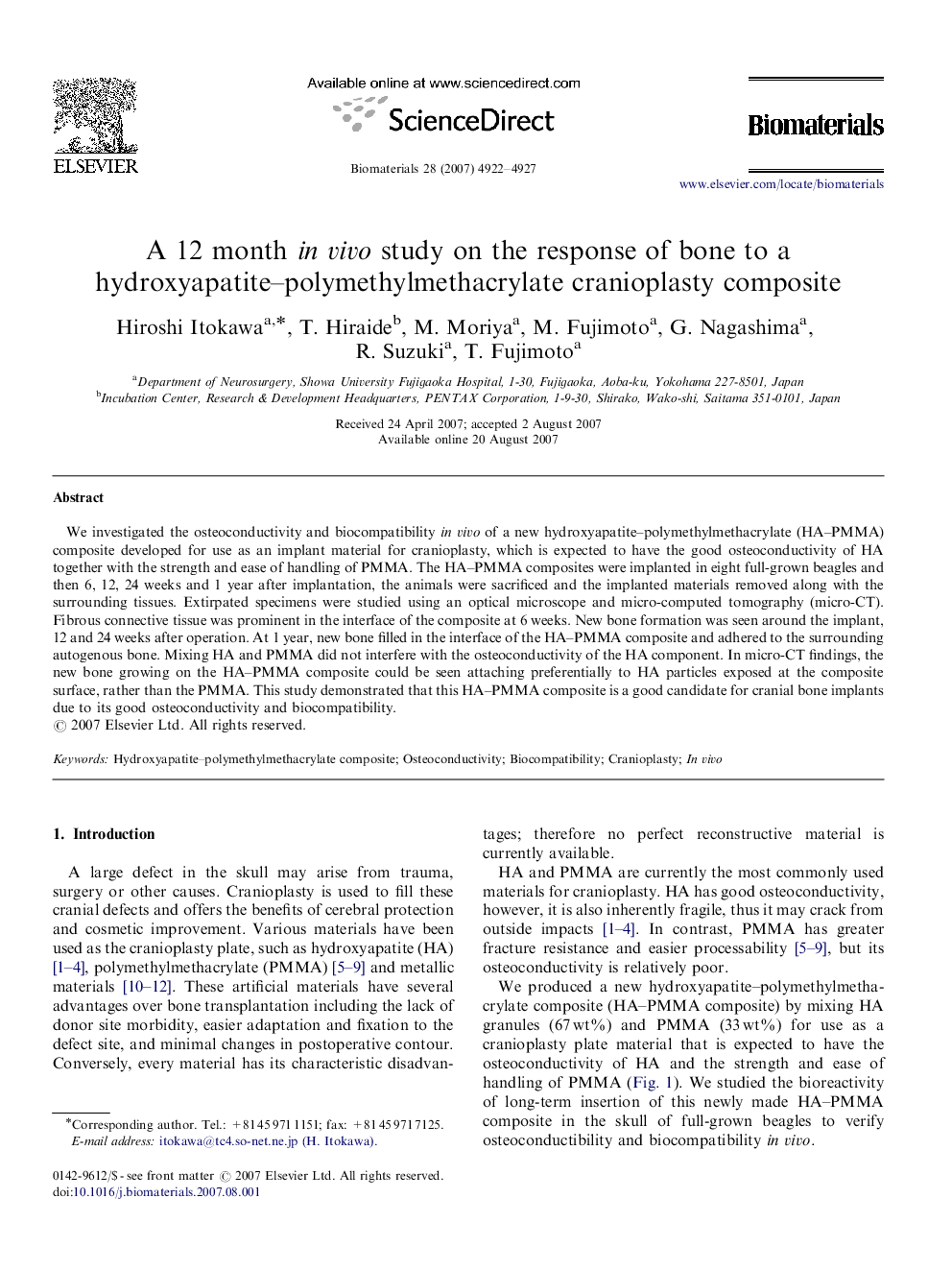| Article ID | Journal | Published Year | Pages | File Type |
|---|---|---|---|---|
| 10563 | Biomaterials | 2007 | 6 Pages |
We investigated the osteoconductivity and biocompatibility in vivo of a new hydroxyapatite–polymethylmethacrylate (HA–PMMA) composite developed for use as an implant material for cranioplasty, which is expected to have the good osteoconductivity of HA together with the strength and ease of handling of PMMA. The HA–PMMA composites were implanted in eight full-grown beagles and then 6, 12, 24 weeks and 1 year after implantation, the animals were sacrificed and the implanted materials removed along with the surrounding tissues. Extirpated specimens were studied using an optical microscope and micro-computed tomography (micro-CT). Fibrous connective tissue was prominent in the interface of the composite at 6 weeks. New bone formation was seen around the implant, 12 and 24 weeks after operation. At 1 year, new bone filled in the interface of the HA–PMMA composite and adhered to the surrounding autogenous bone. Mixing HA and PMMA did not interfere with the osteoconductivity of the HA component. In micro-CT findings, the new bone growing on the HA–PMMA composite could be seen attaching preferentially to HA particles exposed at the composite surface, rather than the PMMA. This study demonstrated that this HA–PMMA composite is a good candidate for cranial bone implants due to its good osteoconductivity and biocompatibility.
